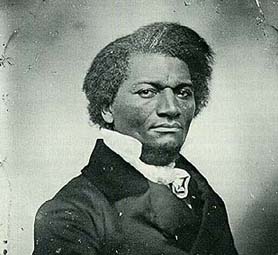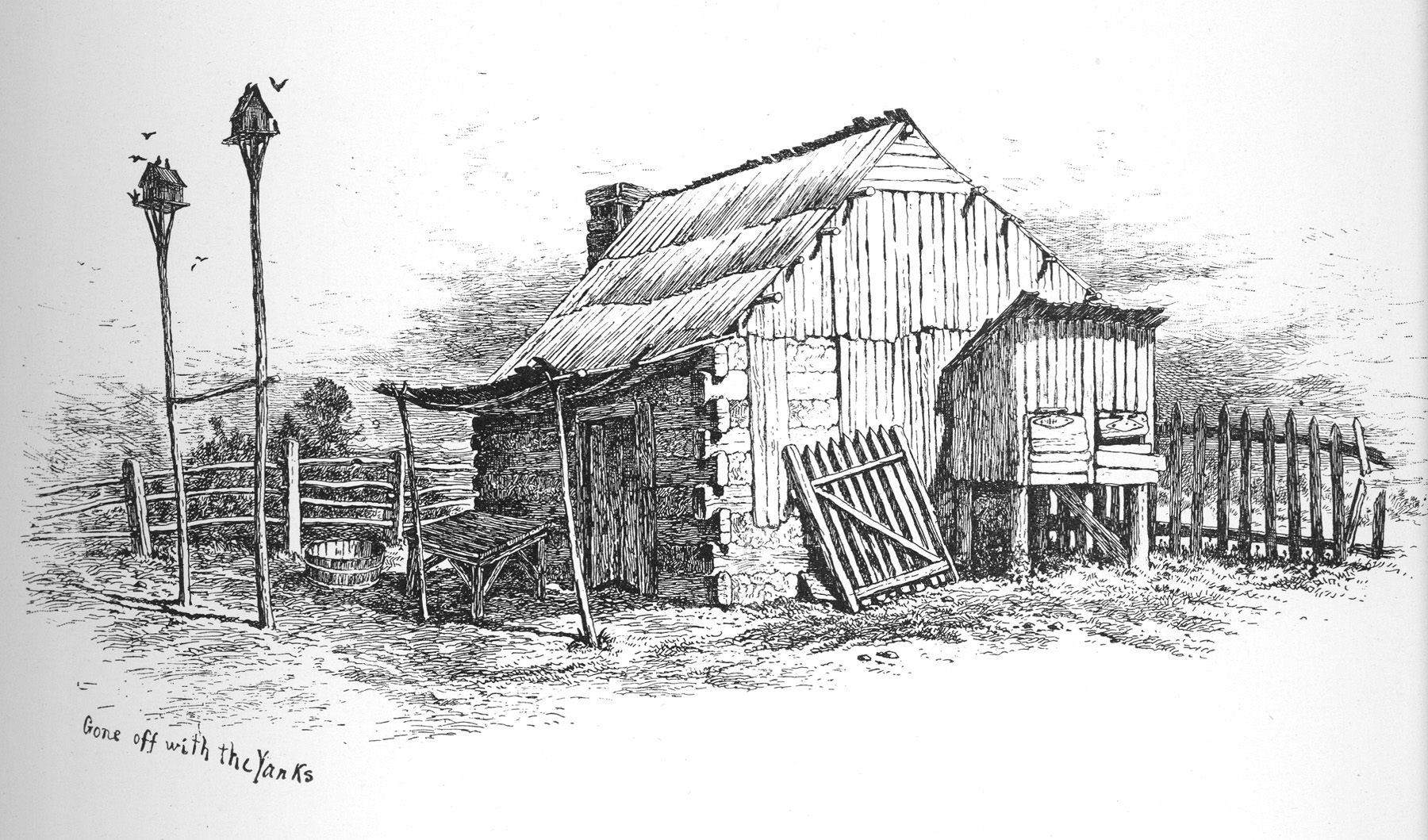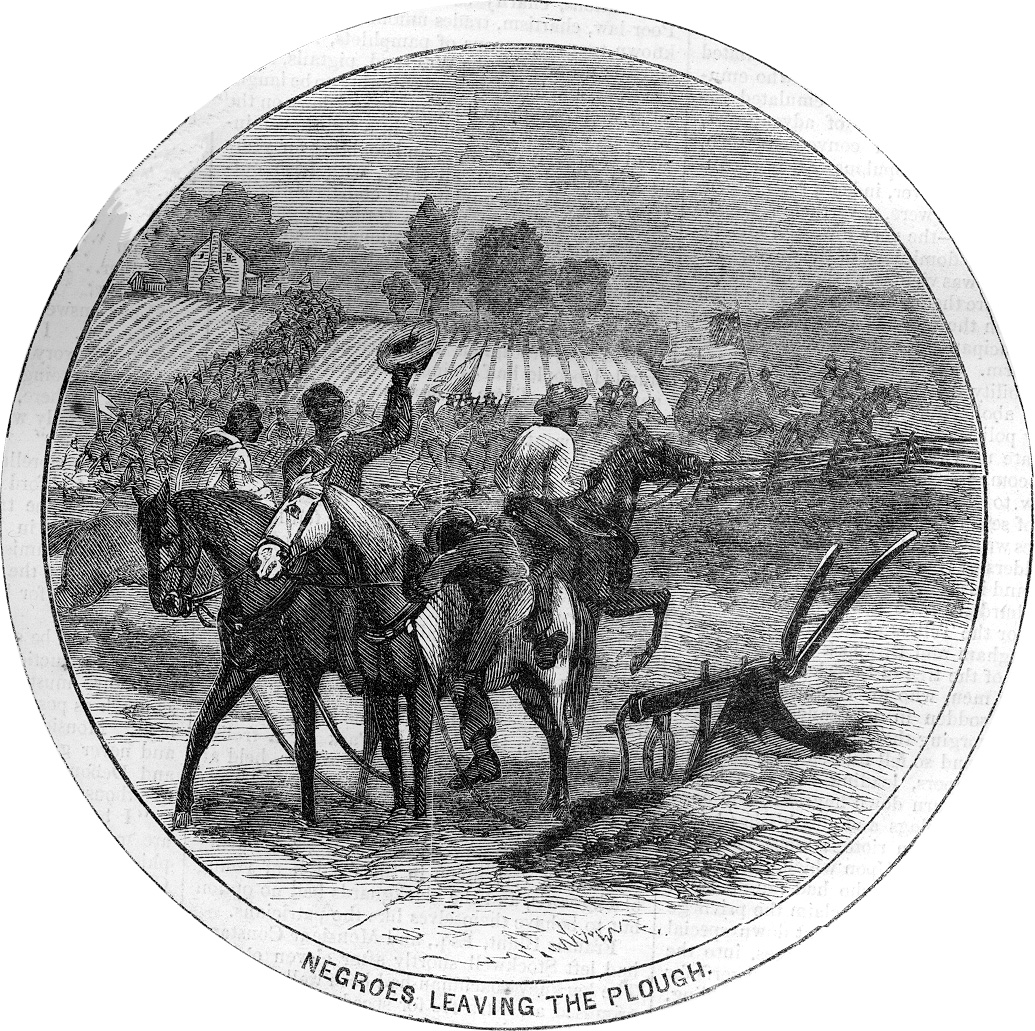African-Americans in the Civil War (Part 2)
Part two in a series.
While thousands of slaves escaped slavery before the Civil War, in many cases using the Underground Railroad, thousands more escaped slavery during the Civil War. In 1862, from April to August the Union army occupied Fredericksburg, Virginia – during that period over ten thousand escaped at “The Crossing.” The Crossing was at the Rappahannock River from Fredericksburg to Falmouth and slaves from Spotsylvania, Caroline, Orange, and Stafford Counties escaped to freedom. Many of the men who escaped joined the United States Colored Troops in 1863 and 1864.

My favorite historical person in the Civil War is Frederick Douglass. He was the son of a slave and a white man; therefore he was a slave. He became the most important African-American of the Civil War era. He was both an urban and agricultural slave, who was treated fairly well in the city but cruelly on the plantation. Douglass learned to read and write, he learned a trade, and escaped to freedom. He became an abolitionist lecturer, an author, a publisher, a recruiter for the United States Colored Troops, marshal for the District of Columbia, and ambassador to both Haiti and the Dominican Republic.
Other prominent African-Americans who started their lives as slaves include:
Harriet Tubman – while she was 13 years old was struck in the head by an overseer, she had seizures or sleeping spells for the rest of her life; she is called “Moses” as she led many fellow slaves to freedom. (100-300) During the Civil War, she served with the Union army as a scout, spy, nurse, cook, and laundress.
Elizabeth Keckley – was the daughter of a slave and her white owner, she was considered a “privileged slave,” learning to read and write despite the fact that it was illegal for slaves to do so. She became a dressmaker, bought her freedom, and moved to Washington, D. C. In Washington, she made a dress for Mrs. Robert E. Lee; this sparked a rapid growth for her business. She made dresses for Mrs. Jefferson Davis and Mrs. Abraham Lincoln, becoming a loyal friend to Mary Todd Lincoln. Keckley also founded the Contraband Relief Association, an association that helped slaves freed during the Civil War.
Joseph H. Rainey – was the son of slaves, whose father was a barber; the father eventually made enough money to buy his family and two slaves. Joseph received limited education, but was called to service by the Confederacy. He dug trenches, worked as a cook and steward on a blockade-runner, then escaped with his wife and children to Bermuda returning to Charleston, SC in 1866. The wealthy Rainey became a leader in the Republican Party and was the first African-American to serve in the US House of Representatives.
Blanche K. Bruce – was born to a slave mother and her white owner, he was a personal servant to his half-brother but was accorded a status nearly equal to his master’s children. He studied with his half-brother’s tutor and he escaped to Kansas during the Civil War. He tried to enlist in the Union Army and was refused, after the war he moved to Mississippi and became involved in Republican politics. He became the second African-American to serve in the United States Senate and the first to be elected to a full term.
Robert Smalls – was a slave, conscripted by the Confederate Army to serve aboard an ammunitions transport ship, the Planter. In May of 1862, he captained a black crew and hijacked the ship turning it over to the Union Navy. He became a pilot in the Union Navy and a spokesman for African-Americans. He eventually became a congressman from South Carolina, serving in the US House of Representatives for five terms and most of those terms were after Reconstruction had ended.
William Wells Brown – born into slavery on November 6, 1814, to a slave named Elizabeth and a white planter, George W. Higgins. He escaped in Ohio and adopted the name Wells Brown – the name of a Quaker friend who helped him. He became a conductor for the Underground Railroad and a lecturer on the antislavery circuit in the United States and Europe. He wrote his autobiography, which was a bestseller second only to Frederick Douglass’ autobiography. He also wrote The Negro in the American Rebellion (1867) which is recognized as the first book about black soldiers in the Civil War.
Free African-Americans in the North and the South faced racism; white people, no matter how poor, knew that there were classes of people under them – namely blacks and Indians (Native Americans). Most white Americans defended slavery as the natural condition of blacks in this country. Most immigrants to the North did not want to compete with African-Americans for jobs because wages would be lowered. This created animosity between blacks and immigrants, especially the Irish – who killed many blacks in the draft riots in New York City in 1863.

In the pre-19th Century North, free blacks had nominal rights of citizenship, in some places they could vote, serve on juries and work in skilled trades. As the need to justify slavery grew stronger and racism started solidifying most of the northern states took away those rights. When the northwestern states came into being, they were even worse to blacks, in Ohio, blacks could not live there without a certificate proving their free status. Illinois had severe restrictions on blacks entering the state and Indiana barred them altogether. There was mob violence against blacks from the 1820s up to 1850, especially in Philadelphia where the worst and frequent mob violence occurred. City officials refused to protect blacks and blamed African-Americans for their “uppity” behavior.
African-Americans and their white allies created black schools, churches, and orphanages. They also created mutual aid societies to provide financial assistance to blacks.
In the South, free blacks balanced between slavery and full freedom. Some freedmen were skilled in various trades and were able to buy their family members and some were able to buy slaves for themselves. Most black slave owners bought their family members, so that they would not have to leave their home states. Some black slave owners were profitable plantation owners just like white slave owners. Some freedmen were actually sold back into slavery or chose to go back into slavery rather than move away from their families. Most slaves were not allowed to legally marry and some were not allowed to get very close to their children. Since slaves could be and many would be sold away from their families, any time slaves could stay with their families, they would do so – even if it meant choosing to go back into slavery. Family was very important to the average slave.
In 1860, there were 488,000 free blacks, 226,000 in the North and 262,000 in the South. Many of these free blacks, had once been slaves. I will mention a couple of them from both the North and the South:
William Ellison – born April Ellison, a slave with a slave mother and white father possibly his mother’s owner. He was given special treatment and acquired a skill in gin making; he owned a plantation and 63 slaves in 1860. He changed his name to William in 1820, after his former owner who gave him that special treatment. He was wealthier than 90% of his white neighbors in South Carolina and he operated his plantation like many white plantation owners.
Hiram Revels – was born free to free parents, his mother was of Scottish descent, and he was rumored to be of mixed African and Croatan Indian lineage. He claimed that his ancestors were free as far back as his knowledge extends. He was educated in the South and then the North; he became the first black Senator in the United States as he filled a vacant seat for Mississippi.
John Mercer Langston – was born free in Louisa, VA to a free, Native American-black woman and Ralph Quarles, a plantation owner who had been her master. As a boy John moved to Ohio and was educated at Oberlin College. He was one of the most prominent African-Americans before and during the Civil War and actually was one of the first to hold elective office (township clerk in Brownhelm, Ohio in 1855). Langston topped off his long political career by becoming the first black man to represent Virginia in the US House of Representatives in 1890, after Reconstruction had ended.
William Still – born in New Jersey to ex-slaves, he worked as an abolitionist for the Pennsylvania Anti-Slavery Society and became its chairman. He became the leader of Philadelphia’s African American community. He is often called the “Father of the Underground Railroad,” as he helped as many as 60 slaves a month escape to freedom. He later published The Underground Railroad Records, which chronicles the records of 649 slaves who escaped via the Underground Railroad.
I notice that many of the successful blacks had white fathers. I know most people think white men had sex with black women against their will, but since the children who resulted from their union seem to be treated well and given special privledges wouldn’t this indicate that they were proud of their children and felt an emotional tie to their mother?
There were some successful blacks with white fathers, who were taken care of very well. However, there were many black children of white fathers who were treated very badly, for example Frederick Douglass. However, the lighter the skin of a black person, during those times, the better they may have been treated and the more privileges (education was one privilege) they may have been given. Thus the terms of Mulatto, Quadroon, and Octoroon, detailing the percentage of white blood in a black person. They sold for a higher price than darker slaves, in the slave trade and were thus more highly valued .
The highest ranking black officer during the Civil War, was Lt. Col. William N. Reed, was thought to be a white man. Since he may have passed as white, was educated in Europe, and served in the German army, he is not even listed as the highest ranking black officer, in many books. However, he was killed in the Battle of Olustee, Florida leading the 1st North Carolina Colored Infantry (later renamed the 35th USCT).
John Washington, a Fredericksburg slave of a white father who was never known to him, however, he knew that he had white and black relatives around him throughout his life as a slave. He learned to read and write and was an urban slave, meaning he was rented out to work in the city. He worked in a tobacco factory and a hotel, where he was the most trusted black, and was once sent to work in Richmond. He may not have been a very successful black, but when he went to the Union lines during the occupation of Fredericksburg in April of 1862, the Union soldiers thought he was white. He had newspapers with him when he went to the Union army and he read them. He had been in several places around Virginia, so he spent some time as a scout for the Union army.
In a lot of cases, white men treated their black offspring just like they would other slaves and felt little emotionally about their mothers. So I think that some of the successful blacks became successful because of their skin color and its privileges, while there were many successful blacks without white fathers, who became successful because of their work ethic and saving money that they had earned. Of course there are always exceptions, including the fact that in the 1600’s before race became the major factor in separating the indentured servants and thus making slaves of blacks, white men and women married black men and women in the English colonies in America. So in your first statement, some of the successful blacks could have had white women as their ancestors.
It is probably true that most white men did not treat their children well. The reason this topic interested me is because Josiah Walls, the first black to represent Florida in Congress, somtimes said he was born free, and sometimes said he was born a slave. The legislation that he authored is written very well and most children of slaves did not seem to have the education that he had. There is speculation that his father was white. Some comments on his appearance have indicated mixed race also. He is somewhat of a mystery since the circumstances of his birth and death are not clear. Perhaps more research will uncover more facts with today’s technology. He has no descendants.